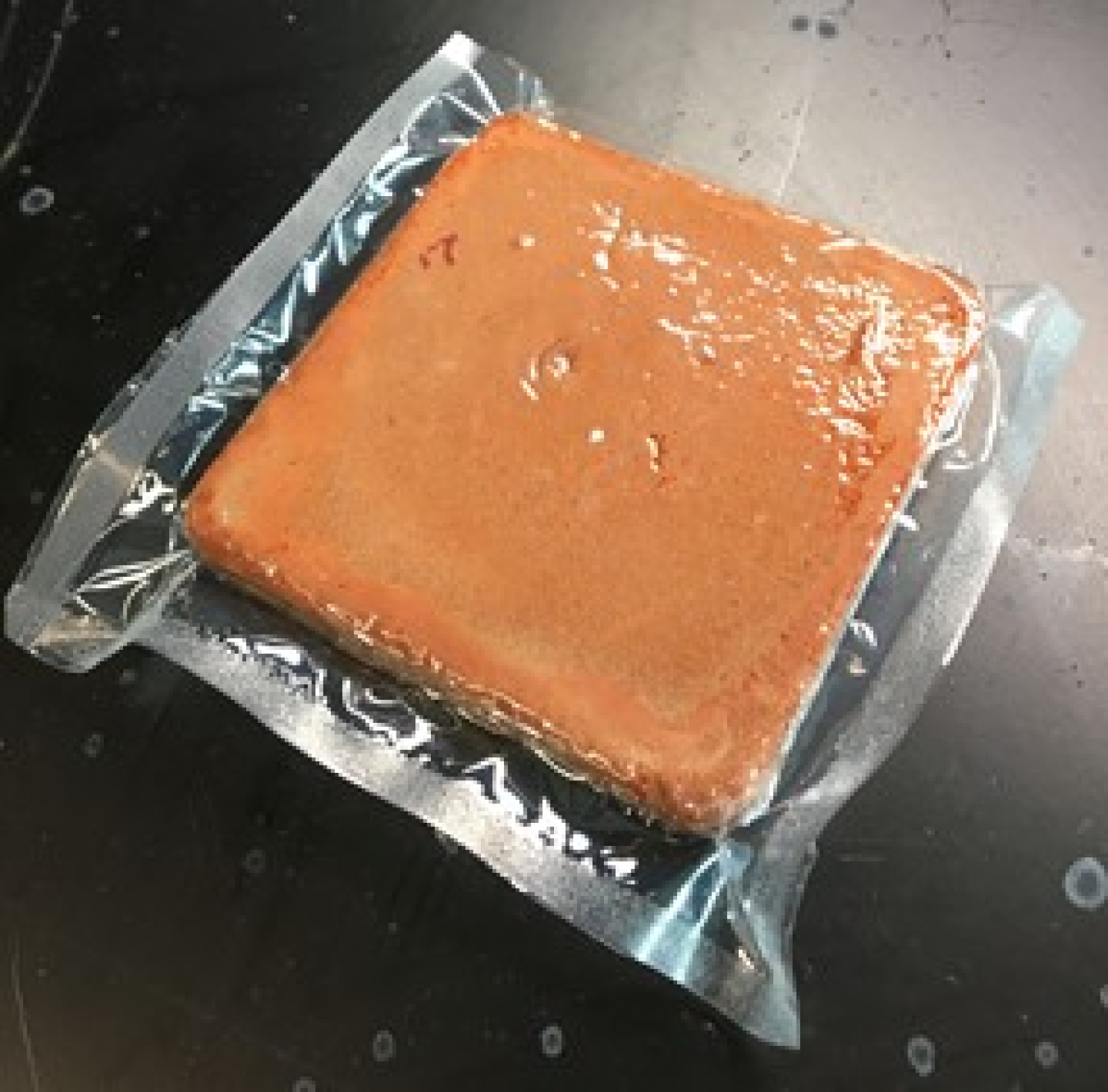Lead Performer: Virginia Commonwealth University, Richmond, VA
October 13, 2021
Example of a fabricated VIP with an organic aerogel core. Sample size is 5 cm, thickness 1 cm.
Lead Performer: Virginia Commonwealth University, Richmond, VA
DOE Total Funding: $493,470
Cost Share: $123,394
Project Term: June 1, 2019 – May 31, 2022
Project Objective
Building thermal insulation will play an increasingly important role in meeting carbon reduction goals. Improved thermal insulation reduces energy consumption and improves thermal comfort by reducing heat loss through the building envelope, resulting in lower CO2 emissions and lower energy bills for consumers and businesses. This project will develop a new nanoporous material consisting of cost-effective polymeric and silica-polymeric aerogels fabricated through a unique freeze-drying method that will be used as a core material to greatly reduce the cost of vacuum insulated panels (VIP).
VIPs are one of the most efficient thermal insulators. VIPs consist of a core porous material that is evacuated to pressures < ~10 mbar with the use of a low thermal conductivity barrier film to enable an R-value per inch > 20. For comparison, expanded polystyrene, commonly used as thermal insulation in buildings, has an R-value per inch < 5. VIPs, however, are not exempt from issues, particularly cost. For example, one of the most popular core types, fumed silica, costs around $5/kg. Densified fumed silica has a density of ~ 0.7 g/cm3, therefore manufacturing a core of 1-ft2 by 1-inch-thick costs > $8, preventing VIPs from being competitive despite their superior thermal insulation properties.
The latter issue can be solved by aerogels. However, aerogels are typically fragile materials that cannot withstand the forces applied on the envelope by the vacuum. Aerogels are also expensive to manufacture since they typically require costly supercritical drying. This project will demonstrate that organic aerogels can be used as VIP cores with the following four objectives:
- Aerogels will be dried at ambient temperature and pressure with a cost target < $5/panel.
- Aerogels will be mechanically robust, with a modulus of compression sufficient to withstand the isostatic forces induced by the evacuation of the envelope.
- Aerogel-based VIPs will have an R-value per inch >20 when evacuated at pressures < 10 mbar.
- Aerogels will have an R-value per inch > 7.2 at ambient pressure to ensure a sufficient level of thermal insulation in case of envelope failure.
Project Impact
Building heating and cooling accounts for > 30% of the total residential electricity demand. Therefore, improvements in the thermal insulation of buildings have a significant economic (i.e., reduced energy bills) and environmental (i.e., lower CO2 emissions) impact. VIPs have a thermal conductivity 5-7 lower than that of conventional thermal insulation. However, cost issues are preventing widespread adoption and use of VIP technology. A key cost driver is related to the porous core of VIPs. Our project will yield a core that is lighter and less expensive than conventional cores. The combination of low density and low cost is made possible by the characteristics of our materials, low-cost, lightweight, mechanically robust aerogels, which are dried at ambient conditions using a proprietary technique. Successful outcome of the project will yield a unique VIP technology, a prototype of which is shown in the image. The project will give the U.S. an edge in the production of thermally insulating materials for the construction industry.
Contacts
DOE Technology Manager: Sven Mumme
Lead Performer: Massimo Bertino, Virginia Commonwealth University
Related Publications
M. F. Bertino, S. Czlonka, “Polymeric aerogel composite and synthesis by ambient and freeze-drying,” PCT/US2019/034797, filed June 1, 2019.
M. F. Bertino and T. Selden, “Fabrication of Aerogels and Aerogel Composites by Ambient Pressure Sublimation of Frozen Solvents,” PCT/US20/39485, filed June 25, 2020.

